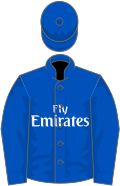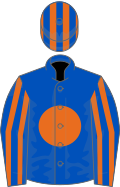| Class | Group 1 |
|---|---|
| Location | July Course Newmarket, England |
| Inaugurated | 1911 |
| Race type | Flat / Thoroughbred |
| Sponsor | Tattersalls |
| Website | Newmarket |
| Race information | |
| Distance | 1 mile (1,609 metres) |
| Surface | Turf |
| Track | Straight |
| Qualification | Three-years-old and up fillies & mares |
| Weight | 9 st 0 lb (3yo); 9 st 9 lb (4yo+) |
| Purse | £291,565 (2023) 1st: £165,347 |
| 2025 | ||
 |  |  |
| Cinderella's Dream | January | Crimson Advocate |
| Previous years | ||
|---|---|---|
| 2024 | ||
 |  |  |
| Porta Fortuna | Jabaara | A Lilac Rolla |
| 2023 | ||
 |  |  |
| Nashwa | Remarquee | Via Sistina |
| 2022 | ||
 |  |  |
| Prosperous Voyage | Inspiral | Sandrine |
| 2021 | ||
 |  |  |
| Snow Lantern | Mother Earth | Alcohol Free |
The Falmouth Stakes is a Group 1 flat horse race in Great Britain open to fillies and mares aged three years or older. It is run on the July Course at Newmarket over a distance of 1 mile (1,609 metres), and it is scheduled to take place each year in July.


































































